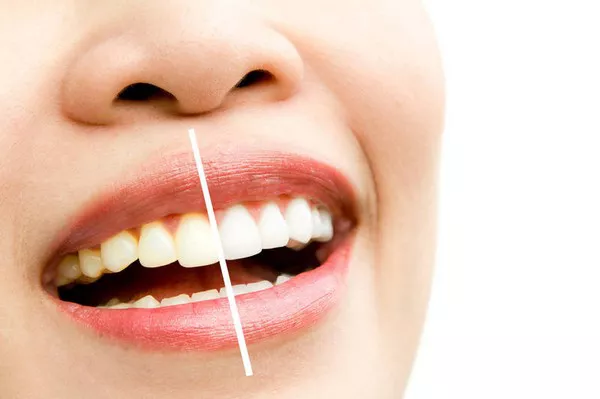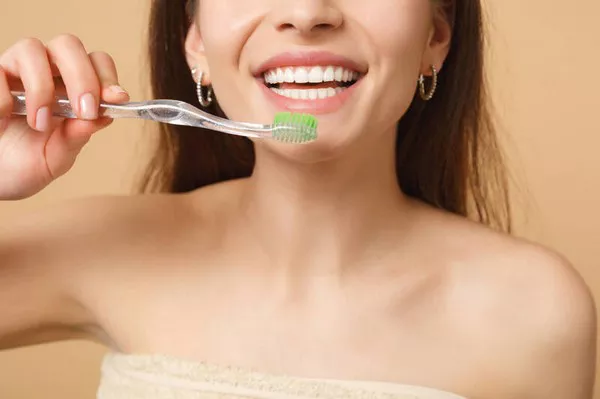Teeth are one of the most distinctive features of our smiles, and their color plays a significant role in our overall appearance. While the natural color of teeth can vary from person to person, many factors can influence their shade, including genetics, lifestyle, and oral hygiene practices. In this article, we will explore the question: Is anyone born with yellow teeth? We’ll delve into the complex interplay of factors that determine tooth color and understand why some individuals may have naturally yellowish teeth.
The Natural Variation of Tooth Color
Teeth, like many other aspects of our physiology, exhibit natural variation. Not everyone is born with the same tooth color, and there is a spectrum of shades that can be considered “normal.” The natural color of teeth can range from bright white to various shades of yellow, gray, or even slightly blue. Several factors contribute to this variation:
Genetics: Genetics play a significant role in determining tooth color. Just as eye and hair color can be inherited, the shade of your teeth can also be influenced by your genetic makeup. Some families may have a genetic predisposition to naturally lighter or darker teeth.
Enamel Thickness: The outermost layer of a tooth is enamel, and its thickness can vary among individuals. Thicker enamel tends to appear more opaque and white, while thinner enamel can allow the underlying dentin (a naturally yellowish substance) to show through, resulting in a more yellow appearance.
Dentin Color: Dentin is the layer beneath the enamel and is naturally yellowish or even slightly gray in color. The shade of dentin can vary among individuals, affecting the overall color of their teeth.
Age: Tooth color can change with age. As we get older, the enamel can thin due to wear and tear, exposing more of the underlying dentin, which can contribute to a yellowish appearance.
Diet and Lifestyle: Dietary choices, particularly the consumption of staining foods and beverages like coffee, tea, and red wine, can influence tooth color. Smoking and tobacco use are also notorious for causing tooth staining and discoloration.
Oral Hygiene: Maintaining good oral hygiene practices, such as regular brushing and flossing, can help prevent surface stains and keep teeth looking their natural shade.
Why Do Some People Have Naturally Yellow Teeth?
While genetics, enamel thickness, and dentin color all contribute to natural tooth color variation, some individuals may have naturally yellow teeth due to a combination of these factors. Here’s why:
Genetic Predisposition: As mentioned earlier, genetics can play a significant role in tooth color. If your parents or grandparents had naturally yellow teeth, you may inherit a genetic predisposition for this trait.
Thin Enamel: People with naturally thin enamel may have teeth that appear more translucent, allowing the yellowish dentin underneath to show through more prominently.
Dentin Color: Some individuals naturally have dentin that is more yellow or gray in color, which can influence the overall appearance of their teeth.
Age: As people age, the enamel naturally thins and wears down, which can lead to more of the underlying dentin becoming visible. This can result in teeth appearing more yellow with age.
Lifestyle Factors: Certain lifestyle choices, such as smoking or a diet rich in staining substances, can exacerbate tooth discoloration, making naturally yellow teeth more noticeable.
Is There a Solution for Naturally Yellow Teeth?
Having naturally yellow teeth is not necessarily a cause for concern, and it is not an indicator of poor oral health. However, if the appearance of your teeth bothers you, there are several options available to enhance their color:
Teeth Whitening: Professional teeth whitening treatments, whether done in a dental office or using at-home kits, can effectively lighten the shade of your teeth.
Dental Bonding: Dental bonding involves applying a tooth-colored resin to the teeth to improve their appearance. This can be a solution for individuals with minor discoloration.
Veneers: Porcelain veneers are custom-made shells that cover the front surface of teeth. They can be used to change the color and shape of teeth.
Proper Oral Care: Maintaining good oral hygiene practices, including regular dental check-ups, can help prevent further staining and keep your teeth looking their best.
Conclusion
Tooth color is influenced by a complex interplay of genetic, structural, and lifestyle factors. While some individuals may have naturally yellow teeth due to genetic predisposition, thin enamel, or the color of their dentin, there are effective ways to enhance the appearance of teeth and achieve a whiter smile. Whether through professional teeth whitening, dental bonding, veneers, or diligent oral hygiene, individuals can take steps to achieve the tooth color they desire. Ultimately, the natural variation in tooth color is a unique aspect of our individuality, and what matters most is maintaining healthy teeth and a confident smile.
Related Topics:































